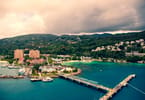On September 17, five Islamic monuments were officially inaugurated in the Al-Darb Al-Ahmar area of Cairo. The Al-Imam mosque, the Al-Laythmosque, the Al-Set Meska mosque, the Ali Labib house and the well zone of Youssef at the Salah El-Din Citadel have all been undergoing restoration work, which cost around LE 9.5 million. These monuments including the first phase construction of the new lighting system of the Salah El-Din Citadel were inaugurated at the ceremony. The ceremony took place at the Salah El-Din Citadel.
Dr. Zahi Hawass, the Secretary General of the Supreme Council of Antiquities (SCA), Dr. Hamdi Zaqzouq, the Minister of Endowment, and Cairo Governor Abdel Azim Waziri inaugurated the special ceremony along with top governmental officials.
The restoration of these important historical edifices is a part of the Supreme Council of Antiquities’ dedication to preserve Egypt’s Islamic heritage.
The most outstanding restoration-conversion attraction, amid the decrepit villages of the Egyptian capital unfamiliar to visitors, one extremely ambitious project has been undertaken with the creation of a vast, green open space in a once run-down area of Cairo. Interestingly since the project was started, another dimension has been added –a rehabilitation of the surrounding residential district called Darb Al Ahmar, so impoverished it needed the Aga Khan to give it a facelift.
For years, tourists have long been kept off the area by the virtually unofficial wasteland or rubbish dump lying alongside the derelict eastern rim of old Cairo’s medieval city walls. From its early beginnings as the massive wastebasket to a gigantic mountain pile of dirt, it ended up obscuring residents’ views of the fortress wall and pretty minarets nearby through the years. It has become, in a sense, irreverent that it lies beside the walled old cemetery known as the City Of the Dead, where scores of homeless Cairenes have found shelter in tombs housing urns of the more-privileged.
In 2004, on the metropolis shared by the living and the dead, where dust, debris and garbage have collected through the millennium, arose a $45 million project the Aga Khan Development Network designed to complete in 7 years to uplift the destitute.
Four years after unexplained shoveling, digging and earth-moving the contractors were doing much to the perplexity of locals, the project finally took shape. Out of the barren 30-hectare Darassa Hills came a lush, green park overlooking Cairo’s Islamic city. It would bring hundreds of jobs, a place for the busy Cairenes to de-stress, open views of the Citadel never there before; notwithstanding, give people hope in a hometown that had never produced them profits.
Opened to the public end on a trial basis, it welcomed the first guests. Once the city built in ancient times by the Fatimids and named Al Quahire or the victorious, the previous 20 percent devoted to open space now had tourists flocking to it. From Easter till end of September, for about 5 and a half weeks, the park construction concentrated on the finer details of what would become an interesting rehab site inaugurated September 17 during a special event at the Citadel.






















